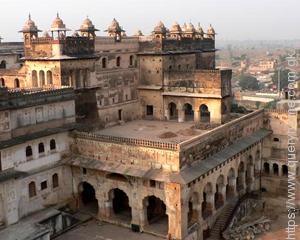Asirgarh Fort is situated in the Satpura Range about 20 kilometres north of the city of Burhanpur, in the Indian state of Madhya Pradesh and situated on one of the most important routes from northern India to the Deccan and known as the "key to the Deccan".
The Asirgarh fort is said to have been built by a zamindar named Asa Ahir in the early 15th century and was part of Mughal Empire. Miran Bahadur Khan (1596–1600) declared his independence and refused to pay homage to the Mughal emperor Akbar and his son Daniyal. Akbar marched towards Burhanpur in 1599 and occupied it. During the Second Anglo-Maratha War, on 18 October 1803, British forces took the control of it.
The architecture of the fort was influenced by the Mughals, an amalgamation of Islamic, Persian, Turkish and Indian styles. There are three man made ponds to provide a water supply. There is a temple known as Gupteshwar Mahadev Mandir, dedicated to the Hindu deity Shiva. There is a local legend that Ashwatthama, a character in the Indian epic Mahābhārata, used to come to this temple to worship and offer flowers each morning to Lord Shiva.

Credit: https://en.wikipedia.org/wiki/Asirgarh_Fort
